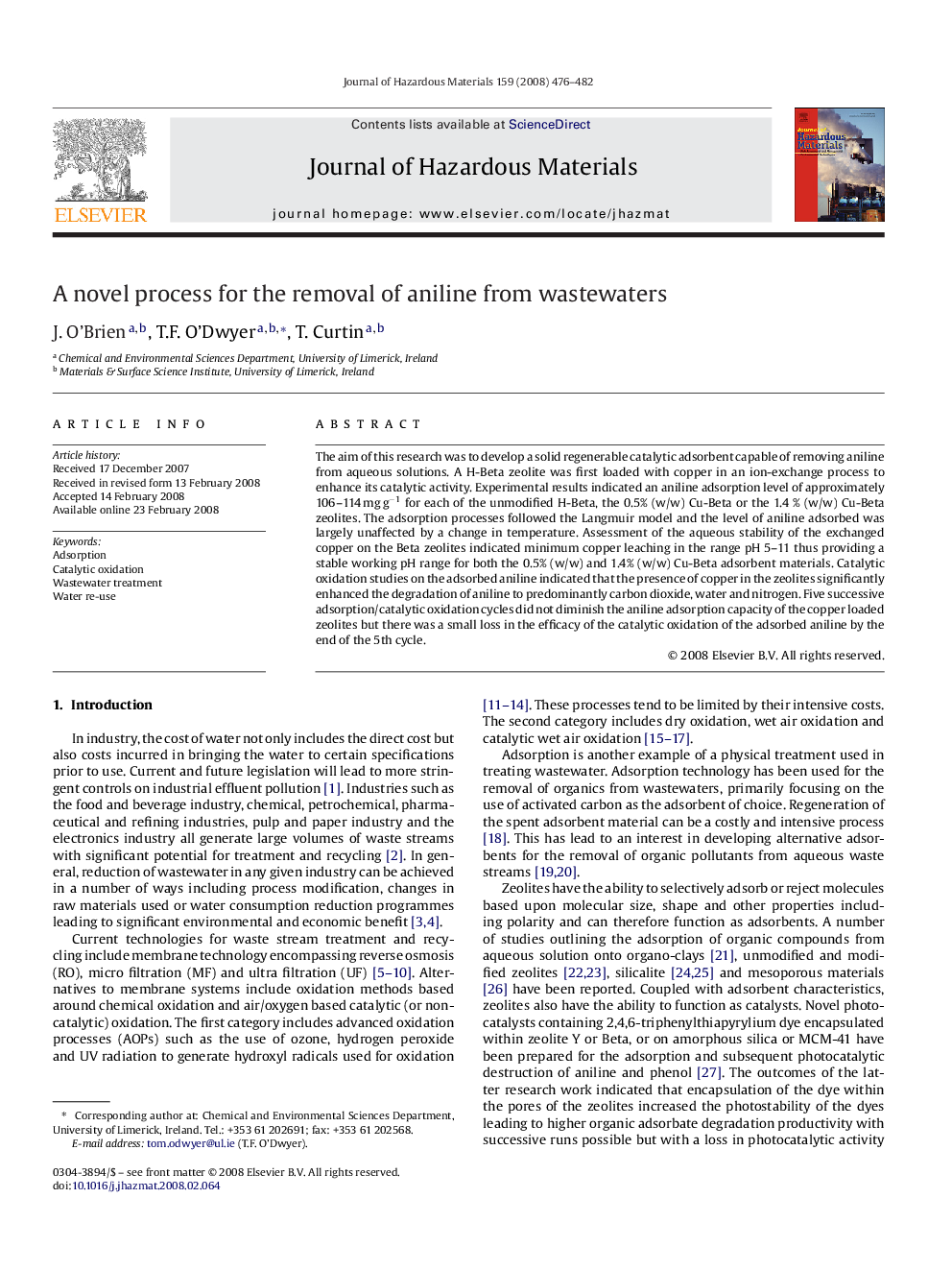| Article ID | Journal | Published Year | Pages | File Type |
|---|---|---|---|---|
| 582993 | Journal of Hazardous Materials | 2008 | 7 Pages |
Abstract
The aim of this research was to develop a solid regenerable catalytic adsorbent capable of removing aniline from aqueous solutions. A H-Beta zeolite was first loaded with copper in an ion-exchange process to enhance its catalytic activity. Experimental results indicated an aniline adsorption level of approximately 106-114 mg gâ1 for each of the unmodified H-Beta, the 0.5% (w/w) Cu-Beta or the 1.4 % (w/w) Cu-Beta zeolites. The adsorption processes followed the Langmuir model and the level of aniline adsorbed was largely unaffected by a change in temperature. Assessment of the aqueous stability of the exchanged copper on the Beta zeolites indicated minimum copper leaching in the range pH 5-11 thus providing a stable working pH range for both the 0.5% (w/w) and 1.4% (w/w) Cu-Beta adsorbent materials. Catalytic oxidation studies on the adsorbed aniline indicated that the presence of copper in the zeolites significantly enhanced the degradation of aniline to predominantly carbon dioxide, water and nitrogen. Five successive adsorption/catalytic oxidation cycles did not diminish the aniline adsorption capacity of the copper loaded zeolites but there was a small loss in the efficacy of the catalytic oxidation of the adsorbed aniline by the end of the 5th cycle.
Related Topics
Physical Sciences and Engineering
Chemical Engineering
Chemical Health and Safety
Authors
J. O'Brien, T.F. O'Dwyer, T. Curtin,
